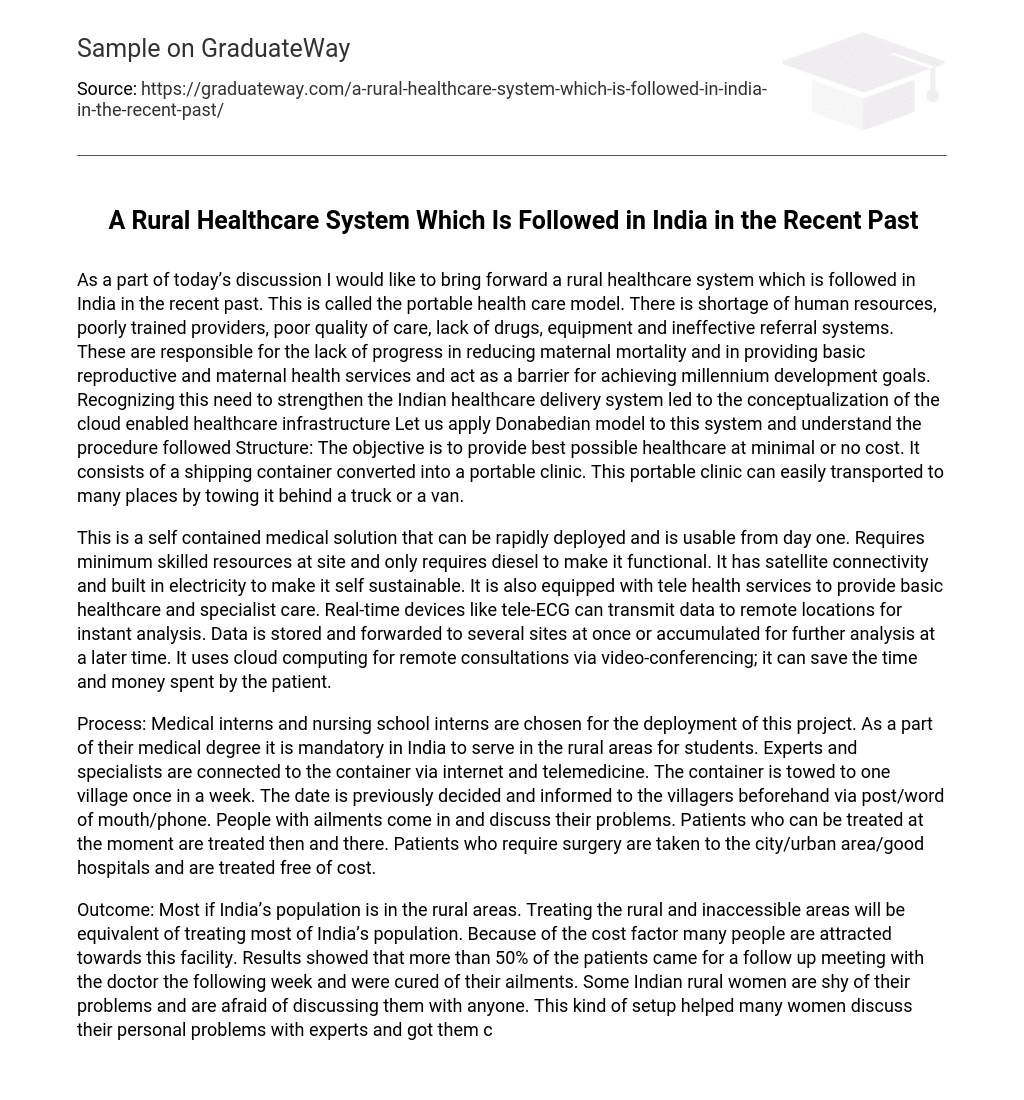As a part of today’s discussion I would like to bring forward a rural healthcare system which is followed in India in the recent past. This is called the portable health care model. There is shortage of human resources, poorly trained providers, poor quality of care, lack of drugs, equipment and ineffective referral systems. These are responsible for the lack of progress in reducing maternal mortality and in providing basic reproductive and maternal health services and act as a barrier for achieving millennium development goals. Recognizing this need to strengthen the Indian healthcare delivery system led to the conceptualization of the cloud enabled healthcare infrastructure Let us apply Donabedian model to this system and understand the procedure followed Structure: The objective is to provide best possible healthcare at minimal or no cost. It consists of a shipping container converted into a portable clinic. This portable clinic can easily transported to many places by towing it behind a truck or a van.
This is a self contained medical solution that can be rapidly deployed and is usable from day one. Requires minimum skilled resources at site and only requires diesel to make it functional. It has satellite connectivity and built in electricity to make it self sustainable. It is also equipped with tele health services to provide basic healthcare and specialist care. Real-time devices like tele-ECG can transmit data to remote locations for instant analysis. Data is stored and forwarded to several sites at once or accumulated for further analysis at a later time. It uses cloud computing for remote consultations via video-conferencing; it can save the time and money spent by the patient.
Process: Medical interns and nursing school interns are chosen for the deployment of this project. As a part of their medical degree it is mandatory in India to serve in the rural areas for students. Experts and specialists are connected to the container via internet and telemedicine. The container is towed to one village once in a week. The date is previously decided and informed to the villagers beforehand via post/word of mouth/phone. People with ailments come in and discuss their problems. Patients who can be treated at the moment are treated then and there. Patients who require surgery are taken to the city/urban area/good hospitals and are treated free of cost.
Outcome: Most if India’s population is in the rural areas. Treating the rural and inaccessible areas will be equivalent of treating most of India’s population. Because of the cost factor many people are attracted towards this facility. Results showed that more than 50% of the patients came for a follow up meeting with the doctor the following week and were cured of their ailments. Some Indian rural women are shy of their problems and are afraid of discussing them with anyone. This kind of setup helped many women discuss their personal problems with experts and got them cured. Children got their immunization vaccines done at the right age. This setup proved to be a great success in many villages. Indian government has planned to deploy more of these containers in many more parts of the country





